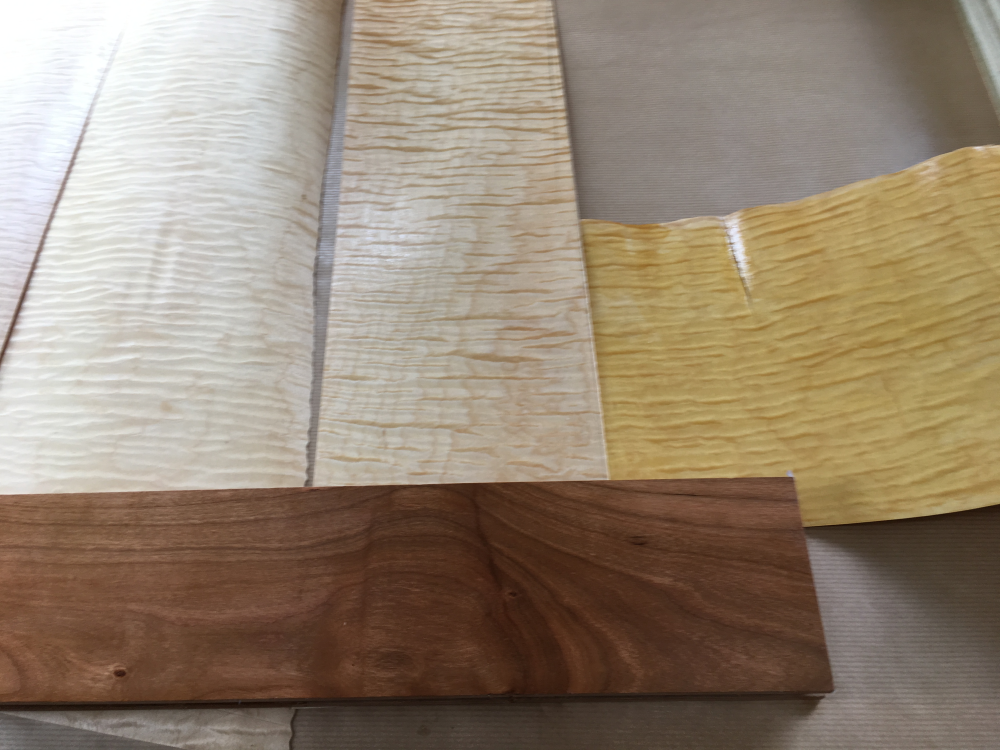mbartlett99
Established Member
I've just veneered some very well figured ripple maple (from Mundys who were super helpful) and of course need to finish them. FWIW they
re for kitchen doors and will have a cherry frame. I'm trying to keep them pale while bringing out the figure - in a way opposing needs. After bit of advice here and some test panels decided that a pale shellac would do the trick but did a test piece with Osmo Polyx (which will be on the cherry). Result was a bit of a surprise ....

From left to right matt nitro cellulose, osmo polyx and then Morrells Special Pale Polish.
Had two surprises; firstly how yellow the shellac was (thats pale?) and then how little the osmo had altered the colour. Totally unexpected. I haven't used either finish before so pointers welcome.
I've also done some test panels with waterborne pu, acrylic etc but they did nothing for the figure.
re for kitchen doors and will have a cherry frame. I'm trying to keep them pale while bringing out the figure - in a way opposing needs. After bit of advice here and some test panels decided that a pale shellac would do the trick but did a test piece with Osmo Polyx (which will be on the cherry). Result was a bit of a surprise ....

From left to right matt nitro cellulose, osmo polyx and then Morrells Special Pale Polish.
Had two surprises; firstly how yellow the shellac was (thats pale?) and then how little the osmo had altered the colour. Totally unexpected. I haven't used either finish before so pointers welcome.
I've also done some test panels with waterborne pu, acrylic etc but they did nothing for the figure.







































